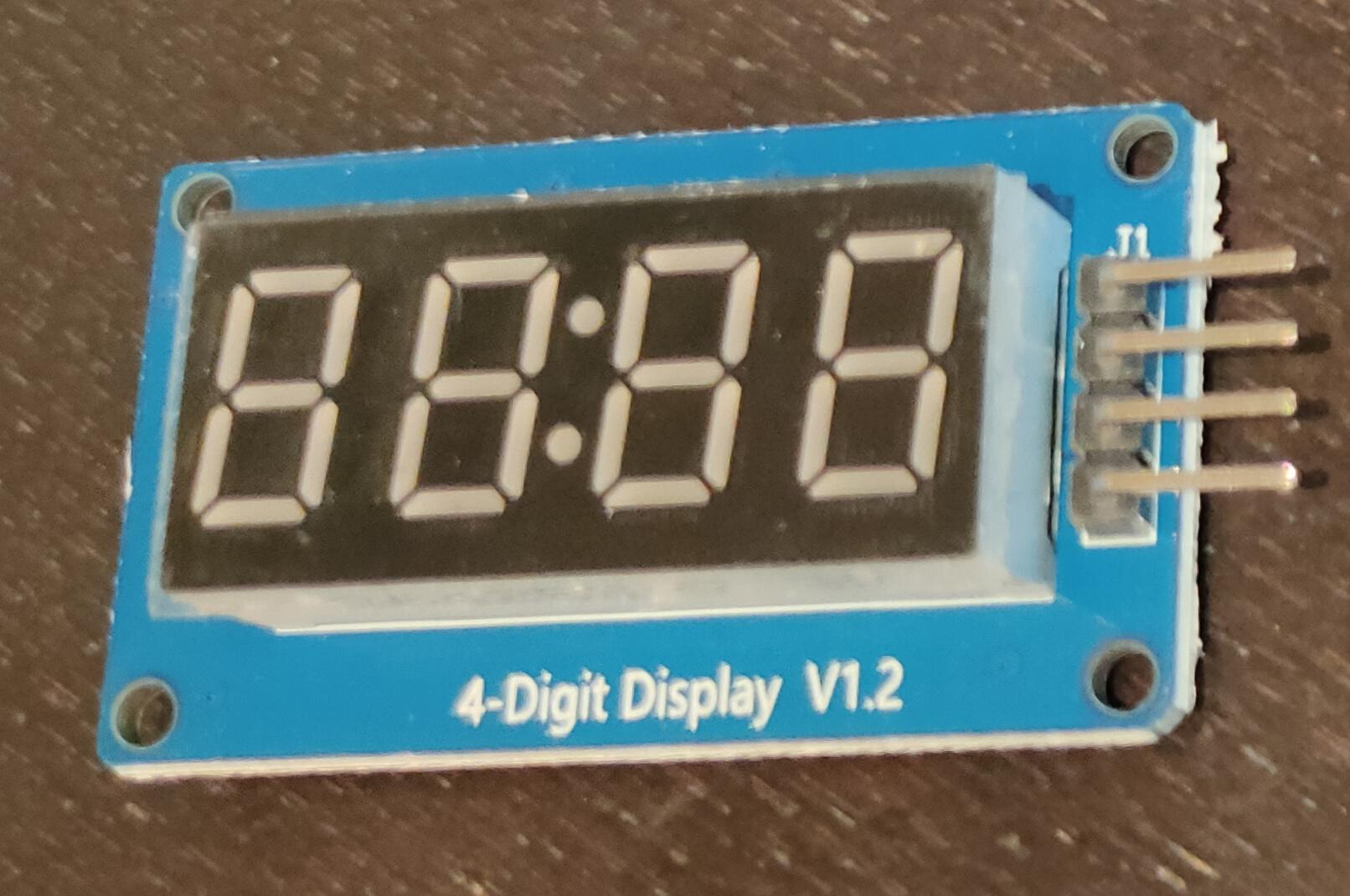Last Updated or created 2023-01-05
These tiny modules use a Clock and Data signal.
The rest of the pins are for 3.3V and Gnd.
There are many libraries you can choose from, i’ve tried several.
For now, i ended up with this one.
Another promising one is https://github.com/AKJ7/TM1637
Another one i’ve tested https://github.com/bxparks/AceSegment
Now i have to add Wifi and Mqtt so it can remotely controlled.
Connected like this
Code with Wifi/Mqtt
#include <Arduino.h>
#include <TM1637Display.h>
#include <ESP8266WiFi.h>
#include <PubSubClient.h>
const char* ssid = "MYSSID";
const char* password = "MYSSIDPASS";
const char* mqtt_server = "MQTT-SERVER-IP";
const int CLK = D6; //Set the CLK pin connection to the display
const int DIO = D5; //Set the DIO pin connection to the display
int numCounter = 0;
int mydata = 0;
// The amount of time (in milliseconds) between tests
#define TEST_DELAY 2000
const uint8_t SEG_DONE[] = {
SEG_B | SEG_C | SEG_D | SEG_E | SEG_G, // d
SEG_A | SEG_B | SEG_C | SEG_D | SEG_E | SEG_F, // O
SEG_C | SEG_E | SEG_G, // n
SEG_A | SEG_D | SEG_E | SEG_F | SEG_G // E
};
TM1637Display display(CLK, DIO);
WiFiClient espClient;
PubSubClient client(espClient);
unsigned long lastMsg = 0;
#define MSG_BUFFER_SIZE (50)
char msg[MSG_BUFFER_SIZE];
int value = 0;
void setup()
{
display.setBrightness(0x0a); //set the diplay to maximum brightness
Serial.begin(115200);
setup_wifi();
client.setServer(mqtt_server, 1883);
client.setCallback(callback);
}
void setup_wifi() {
delay(10);
// We start by connecting to a WiFi network
Serial.println();
Serial.print("Connecting to ");
Serial.println(ssid);
WiFi.mode(WIFI_STA);
WiFi.begin(ssid, password);
while (WiFi.status() != WL_CONNECTED) {
delay(500);
Serial.print(".");
}
client.setServer(mqtt_server, 1883);
client.setCallback(callback);
randomSeed(micros());
Serial.println("");
Serial.println("WiFi connected");
Serial.println("IP address: ");
Serial.println(WiFi.localIP());
}
void callback(char* topic, byte* payload, unsigned int length) {
char buffer[4];
Serial.print("Message arrived [");
Serial.print(topic);
Serial.print("] ");
for (int i = 0; i < length; i++) {
Serial.print((char)payload[i]);
buffer[i] = int(payload[i]);
}
Serial.println();
// mydata=int(payload[0])+int(payload[1]*10);
int n;
n = atoi(buffer);
display.showNumberDec(n); //Display the numCounter value;
}
void reconnect() {
// Loop until we're reconnected
while (!client.connected()) {
Serial.print("Attempting MQTT connection...");
// Create a random client ID
String clientId = "ESP8266Client-";
clientId += String(random(0xffff), HEX);
// Attempt to connect
if (client.connect(clientId.c_str())) {
Serial.println("connected");
// Once connected, publish an announcement...
client.publish("escape/seg1ping", "seg1alive");
// ... and resubscribe
client.subscribe("escape/seg1data");
} else {
Serial.print("failed, rc=");
Serial.print(client.state());
Serial.println(" try again in 5 seconds");
// Wait 5 seconds before retrying
delay(5000);
}
}
}
void loop() {
if (!client.connected()) {
reconnect();
}
client.loop();
unsigned long now = millis();
if (now - lastMsg > 2000) {
lastMsg = now;
++value;
snprintf (msg, MSG_BUFFER_SIZE, "seg1alive #%ld", value);
Serial.print("Publish message: ");
Serial.println(msg);
client.publish("escape/seg1ping", msg);
}
}


